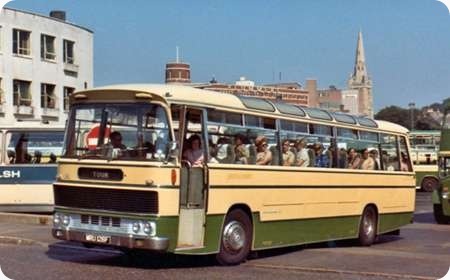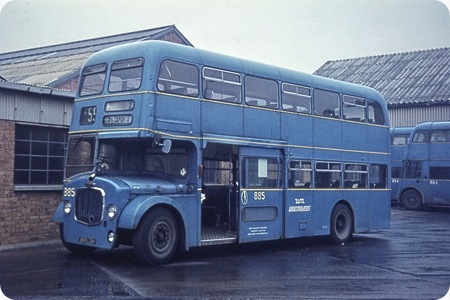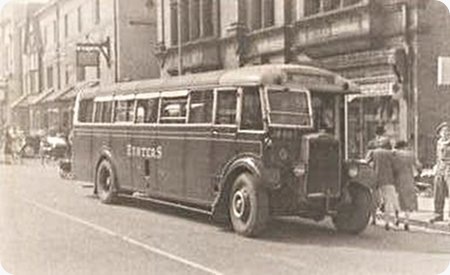Hants & Dorset – Bristol RE – MRU 126F – 918
Hants & Dorset Motor Services
1968
Bristol RELH6G
Duple Commander III C48F
This photo taken in the early seventies at Bournemouth Square bus station shows Hants & Dorset No 918 one of a batch of five similar coaches delivered in June 1968 No’s 916-920 registrations MRU 124-128F these being Bristol RELH6Gs fitted with Duple Commander III bodies those on 916/917 being C40F whilst 918-920 were C48F, the Bristol/Duple combination was somewhat unusual. The RE was a vehicle I was undecided about but as my recent posting on the East Kent coaches shows I am a fan of the Duple Commander bodies especially the Mk III and Mk IV of which this is an excellent example in it’s restrained but elegant livery, note the full set of top sliding windows and the quarter lights a classic of it’s day.
Photograph and Copy contributed by Diesel Dave
13/03/14 – 07:48
Nice, Dave! Looks a lot better than the later livery of poppy and white . . .
Pete Davies
13/03/14 – 07:49
After the ZF Reliance, the RELH was easily the best coach of the ’60s and early ’70s. The ECW body was also superb but these Duple coaches came as welcome relief to the almost unrelieved Lowestoft fare. Only in the early ’70s did Plaxton get a look in – for about two years they provided NBC with only RELH coaches.
David Oldfield
13/03/14 – 17:02
To my eye, the Duple bodies of this period are marred by the truly dreadful Detroit ‘inspired’ front end treatment. One supposes that the perpetrator believed this to be in line with the public tastes of the time. Not in my case!
Roger Cox
14/03/14 – 05:45
Question for you Duple experts – is this a Commander III or IV? Looks like a IV to me comparing with the ones at PMT (3 x G and 2 x H Reg on AEC 691 chassis). The low mounted headlamps look like the IV or are these because of the front mounted Bristol RE radiator? The III version (to my mind) had a horrible front grille.
Ian Wild
14/03/14 – 16:27
Problem is, Ian. People don’t seem to agree. This is an earlier Commander – at a time when Viceroys had the earlier grille. I think the IV "came along" when the Viceroy also got this grille – about a year later. The IV’s lower dash and light units, was slightly different with lights in a perspex fairing and there was a Viceroyesque ribbed metal strip all along the side at between wheel arches level. This was the last hurrah for the Commander as the Commander V emerged as a Viceroy – the only Viceroy variant on heavy chassis. By this time, I think only AECs and Leylands carried the Viceroy.
David Oldfield
14/03/14 – 16:27
Hello Ian
This is definitely a Commander III. The ‘horrible’ front grill was on the Commander II, and the early Viceroy, which also had those bulging twin headlights. The only awkward thing about the Mk III for me is the kink in the lower body line, just behind the front wheels. The Commander IV was the stylish design by Carl Olsen that also appeared on the later Viceroy. The headlights were recessed behind a glass panel and lined up with a ribbed aluminium band which continued unbroken along the lower body side. I don’t think the quarter lights and sliding windows were so common on these later marks.
Mike Morton
14/03/14 – 17:45
The awkward kink in the lower body line is in fact the easy way to distinguish the Mark III from the Mark IV plus the ribbed aluminium band mentioned by Mike which was matched by a similar band above the window line. Overall the changes were small but a hugely significant improvement to the design.
Diesel Dave
Quick links to the - Comments Page - Contact Page - Home Page



